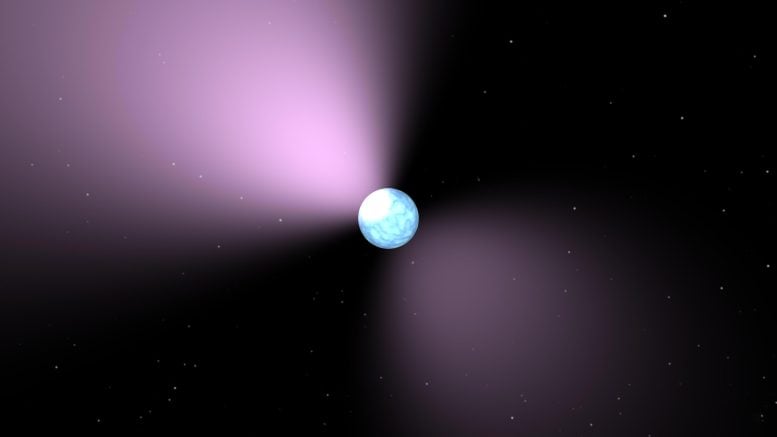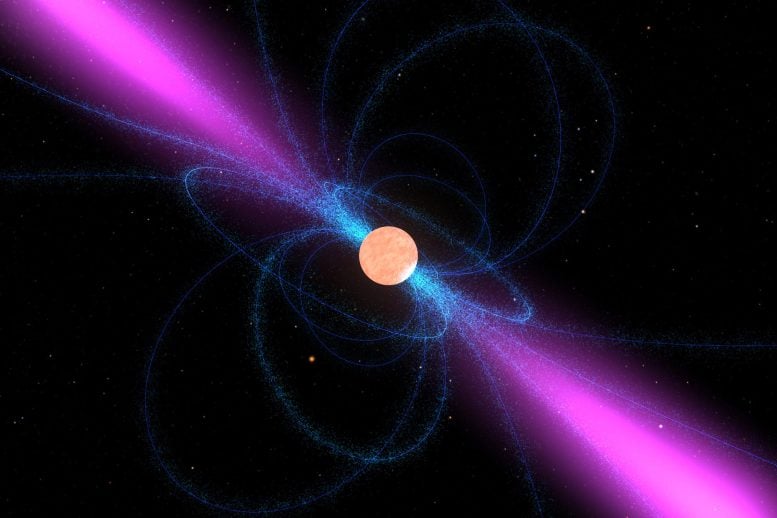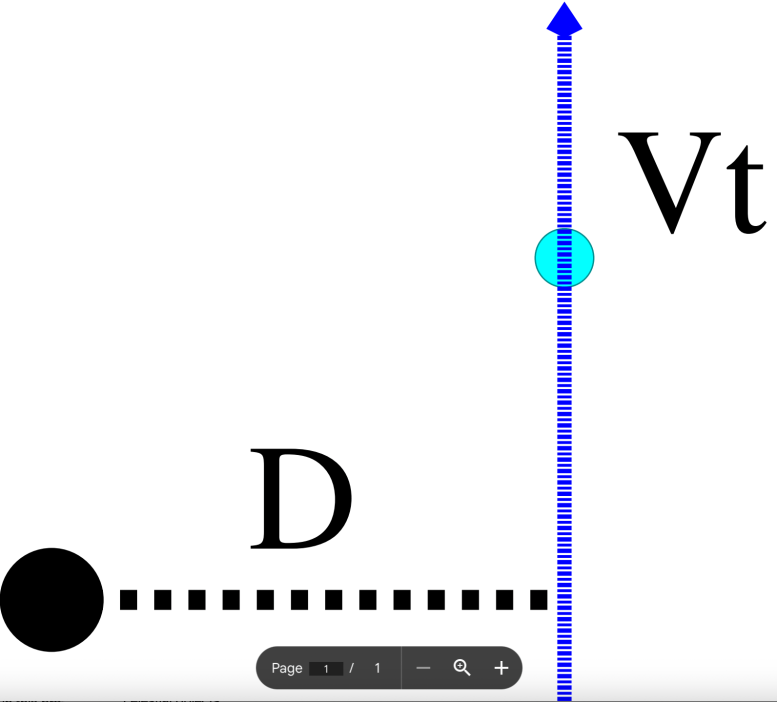
Evidence for potential dark matter objects has been detected using pulsars, which are neutron stars emitting regular beams of radio waves.
These beams were analyzed by Professor John LoSecco, revealing variations and delays that indicate the presence of unseen mass, likely dark matter. LoSecco utilized data from the PPTA2 survey, involving precise measurements from several radio telescopes. The study found around a dozen instances where dark matter likely influenced pulsar signals. This research not only helps in understanding dark matter but also improves pulsar timing data for other astronomical studies.
Detecting Dark Matter With Pulsars
Tantalizing evidence of potential dark matter objects has been detected with the help of the Universe’s ‘timekeepers’.
These pulsars – neutron stars that rotate and emit lighthouse-like beams of radio waves that rapidly sweep through space – were used to identify mysterious hidden masses.
Pulsars earned their nickname because they send out electromagnetic radiation at very regular intervals, ranging from milliseconds to seconds, making them extremely accurate timekeepers.
“Science has developed very precise methods to measure time,” said the astronomer behind the research, Professor John LoSecco, of the University of Notre Dame, who recently presented his findings at the National Astronomy Meeting at the University of Hull.
“On Earth we have atomic clocks and in space we have pulsars.
“While gravitation has been known to slow down light for more than a century, there have been very few applications so far.”

Observing Variations in Pulsar Timings
Professor LoSecco observed variations and delays in pulsar timings, indicating that the radio beams are traveling around an unseen concentration of mass somewhere between the pulsar and the telescope.
He believes these invisible masses are candidates for dark matter objects.
Professor LoSecco studied delays in the arrival times of radio pulses, which normally have nanosecond accuracy. He searched along the path of radio pulses within the PPTA2 survey data release from the Parkes Pulsar Timing Array.
This ongoing project produces precise measurements of pulse arrival times using data from seven different radio telescopes: Effelsberg, Nançay, Westerbork, Green Bank, Arecibo, Parkes, and Lovell, the latter in Cheshire.
The pulses have a cadence of approximately three weeks in three observing bands.

Deviations in Arrival Times Due to Dark Matter
Deviations in the arrival times due to dark matter have a well-defined shape and a size proportional to its mass.
Light passing near regions of dark matter will be slowed by its presence. A search of the precision data from 65 ‘millisecond pulsars’ has revealed around a dozen incidents that appear to be interactions with dark matter.
Professor LoSecco said: “We take advantage of the fact that the Earth is moving, the Sun is moving, the pulsar is moving, and even the dark matter is moving.
“We observe the deviations in the arrival time caused by the change in distance between the mass we are observing and the line of sight to our ‘clock’ pulsar.”
A mass the size of the Sun can produce a delay of about 10 microseconds. The observations Professor LoSecco made have resolutions of the order of nanoseconds, 10,000 times smaller.
“One of the findings suggests a distortion of about 20 percent of the mass of the Sun,” Professor LoSecco said. “This object could be a candidate for dark matter.”
Improving Pulsar Timing Data Sample
He also confirmed that a side effect of this research is that it improves the pulsar timing data sample. This precision sample has been collected to look for evidence of low-frequency gravitational radiation.
Dark matter objects add ‘noise’ to that data, so identifying and removing them will clean the samples of some variability, eliminating such noise during other searches for gravitational radiation.
Shedding Light on Dark Matter
“The true nature of dark matter is a mystery,” said Professor LoSecco. “This research sheds new light on the nature of dark matter and its distribution in the Milky Way and may also improve the accuracy of the precision pulsar data.”
5 Comments
“gravitation has been known to slow down light for more than a century”
So much for “spacetime” fundamentalism.
“gravitation has been known to slow down light for more than a century”
That must be only half the picture, however. Apparently it works both ways – ascending light speed is reduced by gravity, producing an accumulating red shift, while descending light speed is increased by gravity, showing an accumulating blue shift.
Light speed depends on location, in other words, and yet still at any given location the immediate speed of light is the same in any direction. The resulting light shift effect is the same as with GR except that light speed changes – thus light frequency is best viewed as being distorted through gravity changes – instead of resorting to seeing things in terms of gravity-dependent variable time rate metrics and variable distance metrics in GR.
The upshot is that wormholes, ER=EPR, and backward time travel can all be considered time-honored tactically offensive scientific mind control propaganda topics regularly exercised upon the public as an insult.
“gravitation has been known to slow down light for more than a century”
Considering that Maxwell’s light has Euclid’s geometry immediately built into it, as E and B are immediately mutually perpendicular to themselves and to immediately perpendicular to the light-path, the evidence of polarization in light *bent* by gravity alone was probably the most persuasive thing leading me to leave the “spacetime” constant-c faithful. Permanently constant c in light propagation would leave light immediately, and permanently, immune from producing evidence of any bending in any gravity-guided path.
–Permanently constant c in light propagation would leave light immediately, and permanently, immune from producing evidence of any bending in any gravity-guided path.–
— Aside from the DOA (Direction of Arrival. In other words, the gravitationally directed DOA information adds to and complements the gravitationally directed polarization information to describe the overall bent path.
Just my 2 cents on it, of course. By that, it’s meant that this sort of strong eyeballing perspective, this specificity in any assertion of self-evidence in the “Emperor’s” bent spacetime failing, is not a characteristic of standard public discourse on the topic, to say the least.
“On Earth we have atomic clocks and in space we have pulsars.
“While gravitation has been known to slow down light for more than a century, there have been very few applications so far.”
For a first approximation, I could suppose an atomic clock’s immediate (initial, “instantaneous” local) frequency is dominated by non-gravitational light-generation processes (particularly electromagnetic) in an atomically tight space wherein internally generated gravity is nonetheless inevitably much greater than the local open-space observer context. The much greater internal atomic gravity and short local distances involved could thus render the gravity in local open space largely irrelevant to a local atomic clock. A much smaller variation for non-local open space gravities, acting over much longer distances more gradually for much longer times, could provide a critical difference in distortion. For what it’s worth, equating gravitational lensing to a diffraction generation process seems to involve a similar shift in scales so radically different as to beg belief, the response of light to the slowest processes could conceivably be much more self-cohering than normally expected.
The quote seems to rely in part on observing that paths which show more bend are longer paths. Likely he’s just being cute by critically leaving out a lensing context (light theoretically doesn’t have to get bent by anything, if aimed appropriately in an appropriate context), but the bend in light due to gravity is always supposed to follow the shortest, quickest possible path.